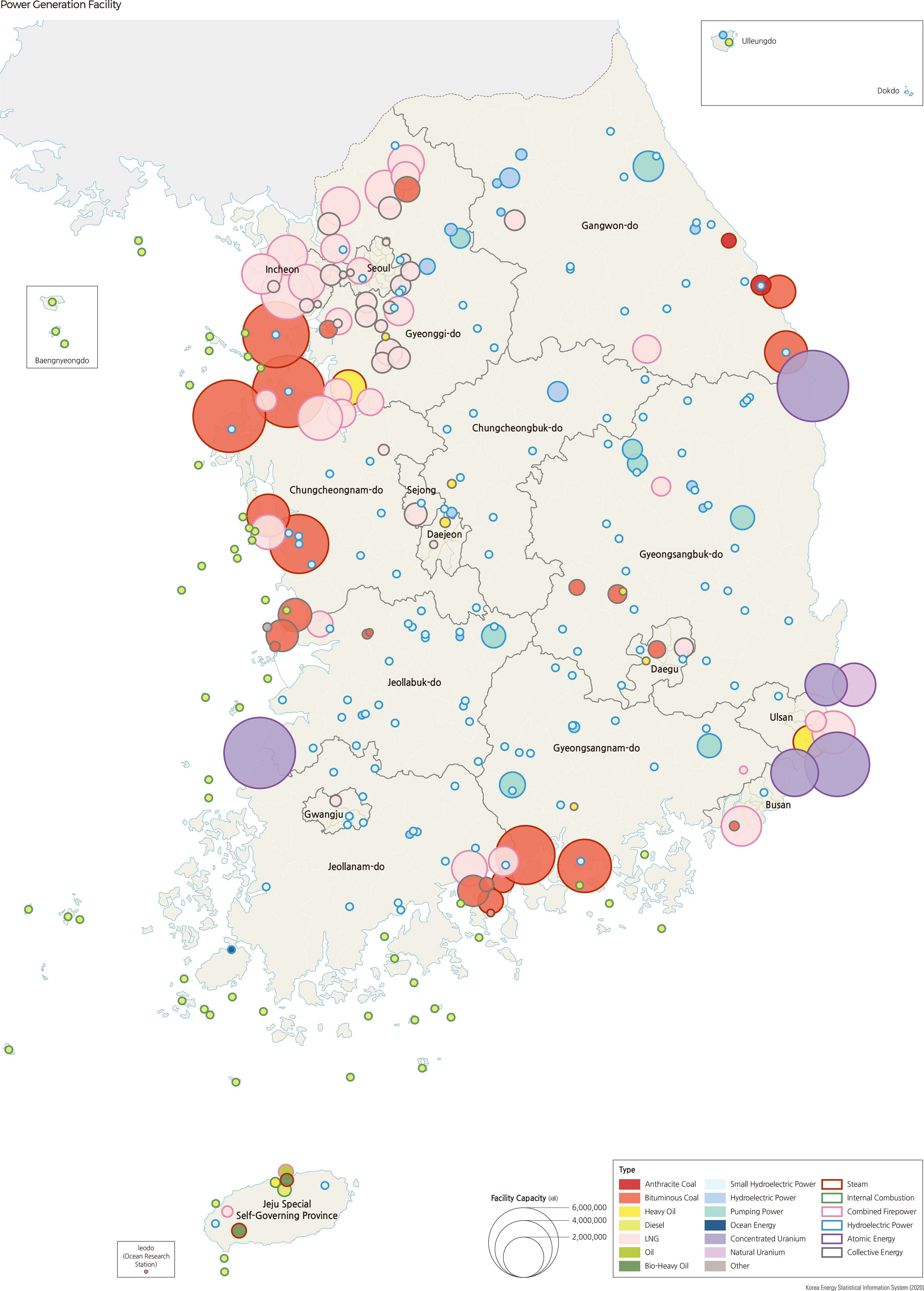English III 2021
The scale of power generation facilities increased by 1.6 times in 10 years, increasing by 49,207 MW from 79,984 MW in 2010. As of 2020, Korea has 129,191 MW of power generation facilities. LNG (32%), bituminous coal (28%), and nuclear power (18%) accounted for 78% of Korea’s total power generation facilities. Power generation facilities using renewable energy sources also increased significantly, although the proportion is still low. Solar power accounted for 0.8% of the total power generation facilities at 690 MW in 2012. However, it grew 21 times to 14,575 MW in 2020, accounting for 11.3% of the entire power generation facilities. Wind power grew fourfold to 1,636 MW in 2020. Bio and fuel cells have also increased 14 times and 11 times, respectively. In 2020, the central government established a series of basic plans for energy to increase renewable energy generation on a five-year cycle for the next 20 years. The 3rd Basic Plan for Energy aims to expand the proportion of renewable energy generation to 30–35% by 2040, develop the renewable energy industry, and establish a value chain of production, storage, transportation, and utilization of the hydrogen industry. A 5-year cycle of the Renewable Energy Basic Plan was also established to develop new and renewable energy. Furthermore, the government announced the 5th New and Renewable Energy Basic Plan, emphasizing the development of the hydrogen industry ecosystem in 2020.
|

